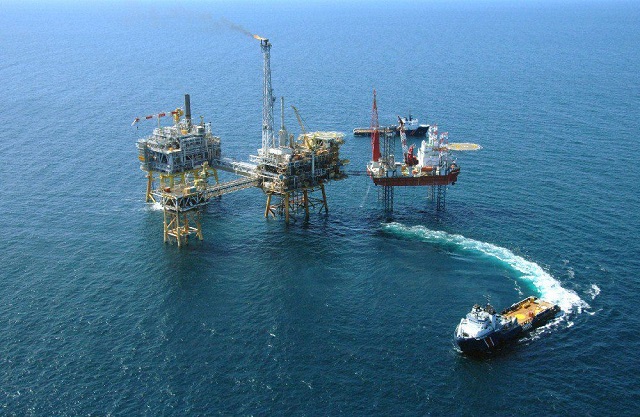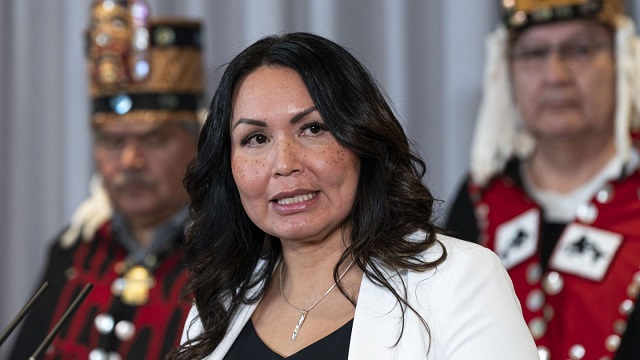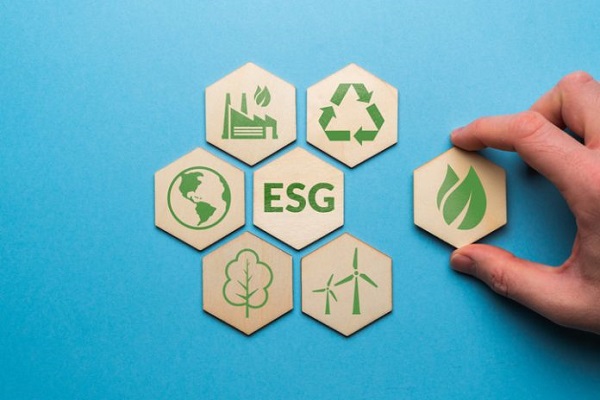Energy
Nova Scotia and Feds kill offshore gas for good

From the Frontier Centre for Public Policy
Nova Scotia and the feds kill an offshore gas project, while their bills are paid by Alberta and Saskatchewan oil and gas
Well, isn’t that just peachy? Nova Scotia’s Progressive Conservative government teamed up with the federal Liberal government to put a bullet in the head of the province’s natural gas industry, whose body was apparently still twitching, despite having been thought dead since 2018.
On December 4, Tory Rushton, Nova Scotia Minister of Natural Resources and Renewables, and Jonathan Wilkinson, federal Minister of Energy and Natural Resources issued a joint statement overruling approval of the offshore regulator, Canada-Nova Scotia Offshore Petroleum Board.
The dollar figure, so far, wasn’t much, just $1.5 million work expenditure bid for the now dead exploration license. But if successful, the company in question, Inceptio Limited, could have maybe, just maybe, revived the offshore gas industry in Nova Scotia.
According to the regulator, there were two bids for eight parcels in the Sable Island area, only one of which was satisfactory. To be clear – the Canada-Nova Scotia Offshore Petroleum Board was apparently seeking bids for development. As in, they actually wanted companies to come and develop these natural gas resources.
But I’ll bet my reporter’s fedora someone realized it didn’t look good for Minister of Environment and Climate Change Steven Guilbeault speaking at COP28 in Dubai about how Canada would be eliminating venting and flaring, while his partner in crime Wilkinson had it in his power to kill off a new methane (natural gas) project in an area that had been purged of the demon gas industry.
No sir. That could not stand. Thus, the announcement killing the Nova Scotia exploration project on the same day as the announcement of the venting and flaring ban. (Saskatchewan calls that a “production cap by default”)
The message is clear to industry – no more new projects if the feds can stop them.
It was very clear in the joint ministerial statement that no more gas projects will be approved, so stop trying.
The ministers overrode the board, saying, “We recognize the expertise of the board and want to reiterate our confidence in the regulatory process that it undertook. However, we both agree that this decision must also account for broader policy considerations, including our shared commitments to advance clean energy and pursue economic opportunities in the clean energy sector, which are beyond the scope of the board’s regulatory purview. This decision will enable us to research and understand the interactions between the two industries as we transition to our clean energy future.
“Leveraging the experience of the Canada-Nova Scotia Offshore Petroleum Board as a world class regulator, Canada and Nova Scotia are actively pursuing the establishment of a joint regulatory regime for offshore renewable energy by amending the Atlantic Accord Acts to expand the board’s mandate so that it can regulate and enable the development of an offshore wind sector in Nova Scotia.
“This will ensure that Nova Scotians can seize the economic benefits associated with the energy transition, including the projected $1-trillion global market opportunity for offshore wind.”
In other words, there’s no future in oil or gas for you, so now you’re going to regulate offshore wind.
Never mind that just a little further down the coast, offshore wind projects are dying off. Never mind that offshore developers are in dire fiscal straits, with billions in losses. Expect the “Offshore Petroleum Board” to get a new name in the coming days.
And shame on the Conservative government of Nova Scotia for going along with this. While the governments of Saskatchewan and Alberta are standing their ground, reasserting control over natural resources, the Nova Scotia Conservatives went along with this travesty.
It’s pretty easy to do, if you don’t have to pay your own bills with your own resources. After all, Nova Scotia gets a huge chunk of its budget from the federal equalization program.
Here’s what Deputy Prime Minister and Minister of Finance Chrystia Freeland wrote to Saskatchewan Deputy Premier and Finance Minister Donna Harpauer in the most recent round of equalization payments:
“In accordance with the legislated formula under the Act and its regulations, your province does not qualify for an Equalization payment for 2023-24.”
Alberta, which has a massive oil and natural gas industry, was similarly stiffed.
And here’s what Freeland wrote to Nova Scotia Minister of Finance Allan MacMaster:
“In accordance with the legislated formula under the Act and its regulations, your province’s Equalization payment for 2023-24 will be $2,802.8 million.”
Alberta and Saskatchewan pay into equalization, largely with money from oil and gas, but Nova Scotia will continue to draw $2.8 billion from it, bit not develop their own natural gas resources.
Nova Scotia’s hospitals are still being paid for by natural gas, except that it’s Alberta and Saskatchewan’s gas, not their own.
Pretty peachy, indeed.
Brian Zinchuk is editor and owner of Pipeline Online, and occasional contributor to the Frontier Centre for Public Policy. He can be reached at [email protected].
Energy
New Report Reveals Just How Energy Rich America Really Is

 From the Daily Caller News Foundation
From the Daily Caller News Foundation
A new report by the Institute for Energy Research (IER), a nonprofit dedicated to the study of the impact of government regulation on global energy resources, finds that U.S. inventories of oil and natural gas have experienced stunning growth since 2011.
The same report, the North American Energy Inventory 2024, finds the United States also leading the world in coal resources, with total proven resources that are more than 53% bigger than China’s.
Despite years of record production levels and almost a decade of curtailed investment in the finding and development of new reserves forced by government regulation and discrimination by ESG-focused investment houses, America’s technically recoverable resource in oil grew by 15% from 2011 to 2024. Now standing at 1.66 trillion barrels, the U.S. resource is 5.6 times the proved reserves held by Saudi Arabia.
The story for natural gas is even more amazing: IER finds the technically recoverable resource for gas expanded by 47% in just 13 years, to a total of 4.03 quadrillion cubic feet. At current US consumption rates, that’s enough gas to supply the country’s needs for 130 years.
“The 2024 North American Energy Inventory makes it clear that we have ample reserves of oil, natural gas, and coal that will sustain us for generations,” Tom Pyle, President at IER, said in a release. “Technological advancements in the production process, along with our unique system of private ownership, have propelled the U.S. to global leadership in oil and natural gas production, fostering economic benefits like lower energy prices, job growth, enhanced national security, and an improved environment.”
It is key to understand here that the “technically recoverable” resource measure used in financial reporting is designed solely to create a point-in-time estimate of the amount of oil and gas in place underground that can be produced with current technology. Because technology advances in the oil and gas business every day, just as it does in society at large, this measure almost always is a vast understatement of the amount of resource that will ultimately be produced.
The Permian Basin has provided a great example of this phenomenon. Just over the past decade, the deployment of steadily advancing drilling and hydraulic fracturing technologies has enabled producers in that vast resource play to more than double expected recoveries from each new well drilled. Similar advances have been experienced in the other major shale plays throughout North America. As a result, the U.S. industry has been able to consistently raise record overall production levels of both oil and gas despite an active rig count that has fallen by over 30% since January 2023.
In its report, IER notes this aspect of the industry by pointing out that, while the technically recoverable resource for U.S. natural gas sits at an impressive 4.03 quads, the total gas resource in place underground is currently estimated at an overwhelming 65 quads. If just half of that resource in place eventually becomes recoverable thanks to advancing technology over the coming decades, that would mean the United States will enjoy more than 1,000 years of gas supply at current consumption levels. That is not a typo.
Where coal is concerned, IER finds the US is home to a world-leading 470 billion short tons of the most energy-dense fossil fuel in place. That equates to 912 years of supply at current consumption rates.
No other country on Earth can come close to rivaling the U.S. for this level of wealth in energy mineral resources, and few countries’ governments would dream of squandering them in pursuit of a political agenda driven by climate fearmongering. “And yet, many politicians, government agents, and activists seek to constrain North America’s energy potential,” Pyle says, adding, “We must resist these efforts and commit ourselves to unlocking these resources so that American families can continue to enjoy the real and meaningful benefits our energy production offers.”
With President Joe Biden and former President Donald Trump staking out polar opposite positions on this crucial question, America’s energy future is truly on the ballot this November.
David Blackmon is an energy writer and consultant based in Texas. He spent 40 years in the oil and gas business, where he specialized in public policy and communications.
Energy
LNG leader: Haisla Nation Chief Councillor Crystal Smith on the world’s first Indigenous project

Haisla Nation Chief Councillor Crystal Smith during a press conference announcing that the Cedar LNG project has been given environmental approval in Vancouver, Tuesday March 14, 2023. CP Images photo
From the Canadian Energy Centre
By Will Gibson‘Now we are working together to make our own opportunities as owners and developers of the resource’
Growing up in the 1980s, Crystal Smith felt supported and nourished by her community, the Haisla Nation along the shores of Kitimat, British Columbia. But at the same time, she also sensed the outside world had placed some limitations on her future.
“I enjoyed a wonderful childhood with a solid foundation and lots of love, especially from my grandma Cecilia Smith. She raised me because I lost my mother and stepdad at a young age. But it wasn’t popular to be Indigenous when I grew up,” says Smith.
“A lot of people would talk about how Indigenous people were not expected to be successful. That kind of talk really affected my confidence about what I could be.”
Smith, now the Haisla Nation’s elected chief councillor, never wants children in her community to feel those constraints.
Her community has seized on a major opportunity to build prosperity and resiliency for future generations. The Haisla Nation is a partner in the proposed $3.4 billion Cedar LNG project, the world’s first to have Indigenous ownership. A final go-ahead decision for the project to proceed is expected by the middle of this year.
Smith, who has served as board chair of the First Nations LNG Alliance since 2019, has already seen tangible changes in her community since the project was announced.
“It’s hard to put into words about the impact on the ground in terms of how this opportunity has affected our members in their lives,” she says.
“We were just interviewing candidates to serve as board directors on our economic development corporation and one candidate, who is from our community, just amazed me with how far he has come in terms of pursuing his education and how much his career has progressed.”
 The town of Kitimat on British Columbia’s west coast. LNG Canada site in background. Photo courtesy District of Kitimat
The town of Kitimat on British Columbia’s west coast. LNG Canada site in background. Photo courtesy District of Kitimat
Of her own career, Smith says she knew since college that her future was in serving the community. She started working in the Haisla band administration in 2009 and was first elected chief councillor in 2017.
“I was lucky because my family really pushed me to seek an education after high school, so I took the business program at Coast Mountain College. I also helped that I had mentors in my community, including my father Albert Robinson, who served as an elected Haisla councillor, and Ellis Ross (now an elected MLA in B.C), who was very inspiring in terms of his vision as chief councillor and encouraged me to take the step into elected office,” Smith says.
“When I came back to the community from school, I knew I would end up working in our band office. I wanted to see more opportunities for people in my community and LNG provides that.”
She already sees the benefits of the development, as well as the Haisla Nation’s participation in the LNG Canada project, within her own family including for her grandsons.
“Xavier is six and he goes to the same school I attended as a child. He gets to learn parts of our culture, our teachings, as well as the value and importance of family and community. There’s more of an emphasis on our language and culture in the curriculum, which really makes me happy. Luka, who just turned two, will also attend that school when he’s old enough,” Smith says.
“I want programs and services to meet our needs, not the level of government’s needs. And we need to make sure that it is sustainable not just for my grandsons or their peers but for seven generations beyond this one.”
Cedar LNG is coming closer and closer to fruition, with all permits in place and early construction underway.
An eight-kilometre pipeline will be built connecting the recently completed Coastal GasLink pipeline to deliver natural gas to the floating Cedar LNG terminal located along the Douglas Channel near Kitimat.
The facility will be capable of producing up to three million tonnes of liquefied natural gas every year, which will be transported by carriers through the Douglas Channel to Hecate Straight, using the existing deepwater shipping lane, to reach customers in the Asia-Pacific region.
Powered entirely by renewable energy from BC Hydro, Cedar LNG will be one of the lowest carbon intensity LNG facilities in the world. Its so-called emissions intensity will be 0.08 per cent CO2 per tonne, compared to the global average of 0.35 per cent per tonne.

Up to 500 people will work on the project during the peak of construction. Approximately 100 people will be working at the facility full-time during operation, which is expected to start in the second half of 2028.
Smith says the benefits of the project will extend beyond the 2,000 members of the Haisla Nation.
“This work has really helped us reconnect with other Indigenous communities along pipelines and shipping routes,” she says.
“When I was growing up, our communities never had the opportunity to come together because we were separated by the territorial boundaries imposed by the Indian Act. And we were fighting each other for financial scraps from Indian Affairs.
“Now we are working together to make our own opportunities as owners and developers of the resource. That’s very empowering and the most important part. Participating in developing these resources provides independence. It’s the only solution for my nation and other Indigenous communities.”
-

 Brownstone Institute2 hours ago
Brownstone Institute2 hours agoMedical Elites’ Disgrace Over Ivermectin
-

 Automotive7 hours ago
Automotive7 hours agoElectric vehicle mandates mean misery all around
-

 Opinion6 hours ago
Opinion6 hours agoThe American Experiment Has Gone Down In Flames
-

 COVID-192 days ago
COVID-192 days agoCOVID Lab Leak: Over four later, EcoHealth Alliance funding is finally suspended
-

 Community2 days ago
Community2 days agoThe Grand Opening is TODAY!
-

 COVID-192 days ago
COVID-192 days agoNIH Quietly Altered Definition For Gain-Of-Function Research On Its Website, Former Fauci Aide Confirms
-

 Energy2 days ago
Energy2 days agoPope Francis calls for ‘global financial charter’ at Vatican climate change conference
-

 Business2 days ago
Business2 days agoESG Puppeteers




